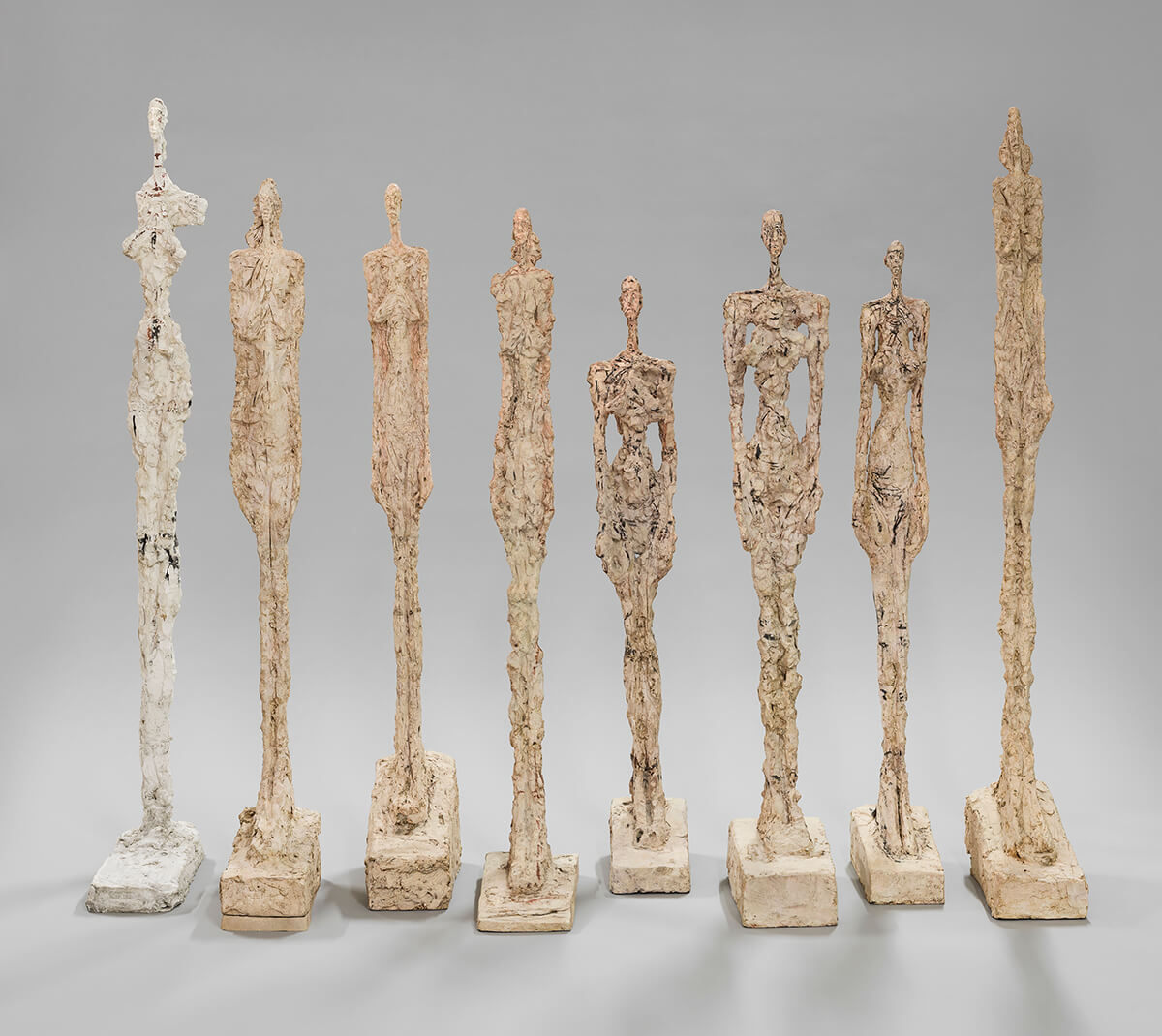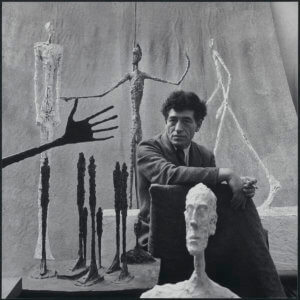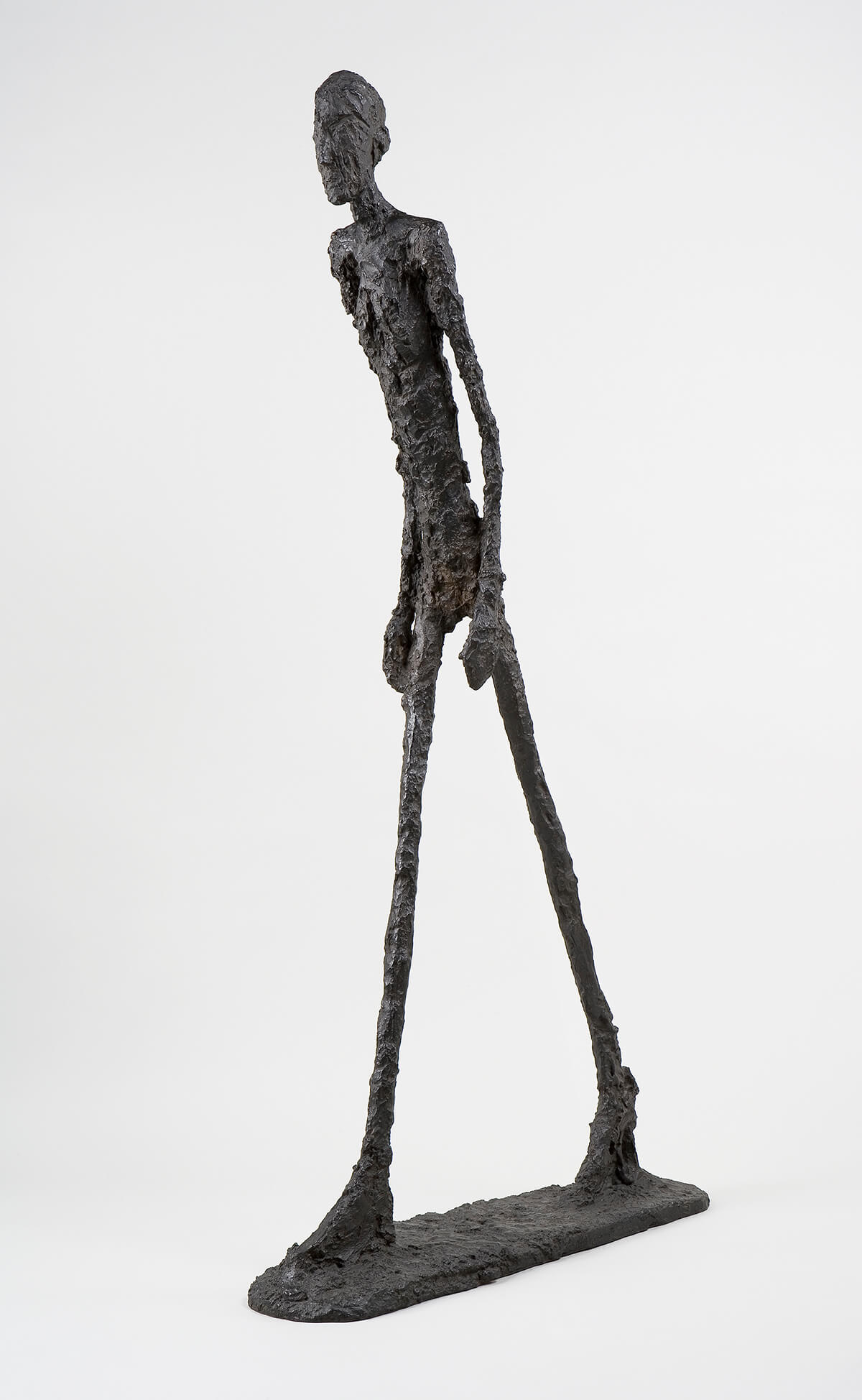
“Women of Venice (Femmes de Venise)”, 1956. Alberto Giacometti. Fondation Giacometti, Paris © Succession Alberto Giacometti, VEGAP, Bilbao, 2018

Alberto Giacometti, 1951. Photograph by Gordon Parks
Swiss artist Alberto Giacometti is renowned for his figurative sculpture and dedicated exploration of the human condition. His work, in my view, best represents the transformation of early 20th century philosophical thought from Freudian psychoanalysis to De Beauvoir and Sartre’s existentialism.
Follow LUX on Instagram: the.official.lux.magazine
The current retrospective at the Guggenheim Bilbao presents the evolution of Giacometti’s remarkable career through five decades, from his early surrealist heads to his rough, slender figures, characterised by their raw, layered process.

“The Nose (Le Nez)”, 1947. Alberto Giacometti. Fondation Giacometti, Paris © Succession Alberto Giacometti, VEGAP, Bilbao, 2018
One of the most fascinating aspects of the exhibition is the artist’s seemingly contrasting representation of gender. In Three men walking, for example, the figures are caught in movement or more specifically, stride, and whilst they are sculpted as a collective, the viewer is keenly aware of their individuality as they move in separate directions. By contrast, we might consider the stillness of the figures in Women of Venice or Four woman and a base; here Giacometti presents us with collectives which are stagnant to the point of seeming distant and un-relatable. There is a sense of fear and intimidation in these latter sculptures, but also of an obsession — an obsessive need to understand.
James Houston
“Alberto Giacometti – A Retrospective” runs until 24 February 2019 at the Guggenheim, Bilbao. For more information visit: guggenheim-bilbao.eus

“Walking Man I (Homme qui marche I)”, 1960. Alberto Giacometti. Fondation Giacometti, Paris © Succession Alberto Giacometti, VEGAP, Bilbao, 2018

“Men’s Heads (Têtes d’hommes)” ca. 1959 Fondation Giacometti, Paris © Succession Alberto Giacometti, VEGAP, Bilbao, 2018 Alberto Giacometti







Recent Comments